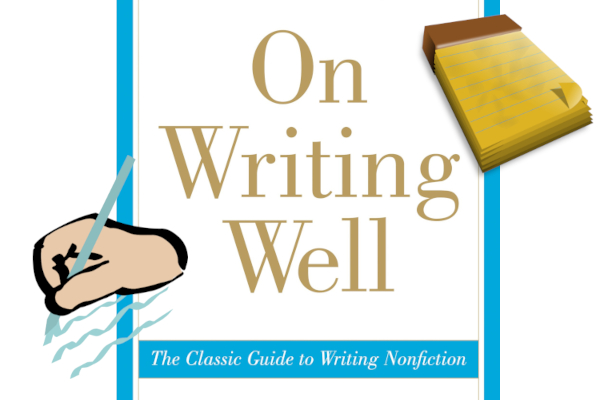Lessons from "On Writing Well: The Classic Guide to Writing Nonfiction"

"On Writing Well," by William Zinsser, is one of my favorite books. It is the only book about writing that I own, but I remember being excited whenever I made time to read it. Here are three quick, major lessons I learned from that book.
1. Write How You Speak and Vice Versa
Your writing shouldn't be completely different from how you talk. The terms and sentence structuring you use should be similar between your writing and speaking. You don't need big words to make your point. It just looks like you're trying too hard to impress others. It is far more impressive to have the ability to communicate your point in a way that your target audience understands, with tact. Having this consistency in academic, professional, and personal writings will help you become a more effective communicator overall.
I exclude text messages, social media posts, and conversations with language barriers for this point. Short message service (SMS) conversations are generally supposed to be quick and might include emojis. Social media platforms have hashtags and word restrictions.
If you're not a good public speaker, you should start working on that. If you use a bunch of crutch words, slow down. Figure out who you're around most when you feel the need to rush your speech. You may need to cut someone out of your life. Its always valuable to curse and use derogatory slurs less.
2. Every Word Should Add Value
You do yourself a disservice when you muddy a direct statement with details that don't add value. The biggest exception here is when a page or word count is required for search engine optimization (SEO) goals or academic essays. I've found that the best way to solve that issue is to explain an example that relates to the topic in multiple ways. That usually provides at least another full paragraph for any terms I'm required to add based on the task.
3. Write, Revise, then SEO
Don't bounce between modes when writing something.
- Get your thoughts down on paper or in the word processor.
- Organize your thoughts into an outline.
- Flesh out your thoughts into a full draft.
- Review your work and add/remove any subtopics to better fit your goal.
- Run a spell check. Maybe also send your draft through the Grammarly browser extension or Hemingway editor site for grammar recommendations.
- If applicable, apply SEO.
- Take a short break before a final review.
I follow this process with blog posts, social media messages, and personal communications.
That's it. If you're a bookworm, the paperback goes in-depth on other nonfiction works like poetry as well.
Tags: books, education, professional-development





